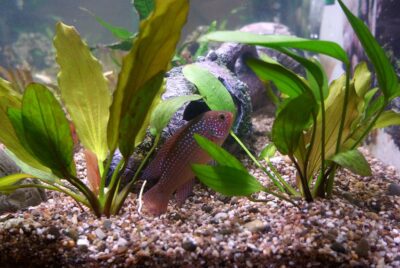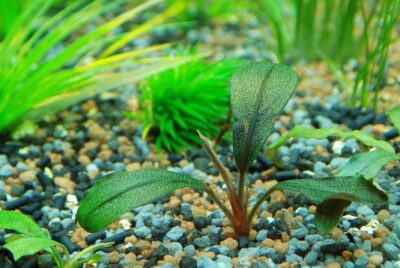Red Aquarium Plants
In this article, I will share some insights on the benefits of red aquarium plants, the factors to consider when selecting the right ones, and how to care for them.
As a fish enthusiast, I believe that the key to creating a stunning and healthy aquarium is not just in selecting the right fish species but in decorating the tank with the right flora. Adding plants to your aquarium not only provides a beautiful scene but also improves the water quality by absorbing carbon dioxide and producing oxygen through photosynthesis.
Benefits of Red Aquarium Plants
They are a vibrant addition to your underwater world. They add a burst of color to ordinary green plants and give your aquarium a more dramatic look. They also provide a natural hiding place for your fish and can help maintain their stress levels.
Additionally, They can aid in filtering the water by removing toxic substances that can harm your fish.
Factors to Consider When Selecting Red Aquarium Plants
Before purchasing them there are a few key factors to consider. First, the lighting of your tank is essential for the plant’s growth.They require moderate to high lighting conditions to thrive, so ensure your tank is equipped with suitable light that can provide a favorable environment for the plants. Additionally, the carbon dioxide concentration in your aquarium affects plant growth.
If you have a heavily stocked tank, then you may not need to supplement the carbon dioxide, but you should monitor your plants’ health for signs of deficiencies. Finally, choose plants that are in line with your skill level. Selecting plants that match your expertise will make it easier for you to care for them and increase the likelihood of their survival.
Popular Types of Red Aquarium Plants
There are several types of red aquarium plants that you can choose from:
Alternanthera Reineckii
Alternanthera Reineckii is a popular choice of aquarium plant among fish enthusiasts. It has unique red and pink leaves that add a lively splash of color to your aquarium. This plant requires a moderate lighting level and easy to care for, making it an ideal pick for beginners.
Ludwigia Repens
Ludwigia Repens is another popular red aquarium plant that is known for its ability to flame in color. It thrives well in high lighting conditions and can be easy to grow. The plant’s leaves range in color from pink to deep red.
Rotala Indica
Rotala Indica is a stem plant that comes in red, green, and pink variations. In the right lighting conditions, it can turn a deep red color, giving your aquarium a magnificent look. This plant is easy to propagate and maintain, making it an excellent pick for beginners.
Caring for Red Aquarium Plants
When it comes to caring for your red aquarium plants, keep in mind a few guidelines:
Light
As mentioned earlier, They require adequate lighting to thrive. Ensure your aquarium has the right light spectrum, intensity, and duration for optimal plant growth.
Nutrients
They consume a lot of nutrients to flourish, so it’s essential to provide the right balance of macronutrients and micronutrients. Additionally, ensure the carbon dioxide concentration in your aquarium is at an optimal level.
Water Quality
Maintaining good water quality is essential to plant growth. Ensure the pH of the water is in the right range to keep your plants healthy.
Conclusion
Adding them to your tank can breathe life and color into your underwater world. There are many types of red aquarium plants to choose from, each with its unique look. Ensure you consider the lighting, nutrient, and carbon dioxide requirements before selecting the plants, and remember to provide adequate care for optimal growth.
With the right selection and care, They can enhance your tank’s overall aesthetic and provide a comfortable and stress-free environment for your beloved fish.
FAQs
Can they survive in low lighting conditions?
They require moderate to high lighting environments to thrive; however, some can still survive in low light.
Which types of fish can coexist with red aquarium plants?
Most peaceful community fish can coexist with red aquarium plants, such as tetras, guppies, and corydoras.
How often should I fertilize my red aquarium plants?
Fertilize them every few weeks, depending on their nutrient requirements.
Is it normal for them to lose color?
Yes, they can lose color if they are not receiving the right light or nutrient conditions. Ensure you monitor your plants’ health regularly for signs of deficiencies.
Can red aquarium plants help prevent algae growth?
Yes, red aquarium plants can help to prevent algae growth by absorbing excess nutrients that would otherwise support algae growth.




